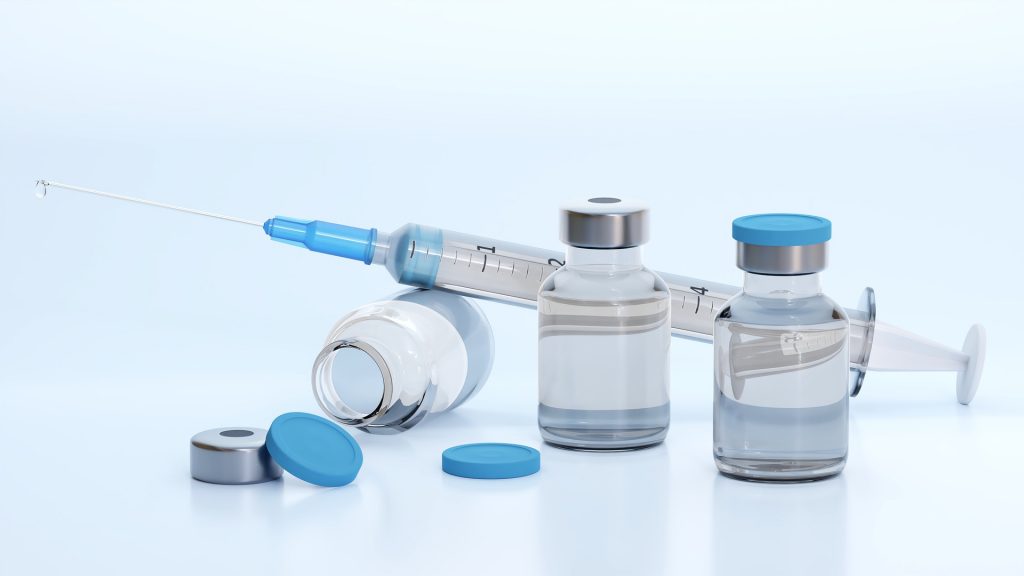Logistics Aids in the Health of the Pharmaceutical Industry

The pharmaceutical and life sciences supply chain is complex and risky, from controlling distribution routes to increasing visibility and security. These are the technology and tactics that improve supply chain efficiency.
Pharmaceuticals and biopharmaceuticals have a strong and increasing market, which is generating demand for logistical services for these items. (Biopharmaceuticals are medicines and therapeutics made through industrial procedures employing biotechnology or living organisms, particularly cells and bacteria.)
According to Grand View Research, the global pharmaceutical manufacturing industry, which was valued at US$324.42 billion in 2019, is predicted to increase at a compound annual growth rate of 13.74 percent from 2020 to 2027. Between 2021 and 2028, the worldwide pharmaceutical logistics industry would grow at an annual rate of 8.5 percent.
The people who rely on these drugs, as well as the corporations that provide and distribute them, benefit from this expansion. Even as capacity tightens, it offers problems, such as effectively estimating demand while keeping costs in check and managing sophisticated transportation and cold-chain requirements. Given that a truckload of pharmaceuticals might be worth millions, security is a major problem.
Other supply chain challenges exist when working with over-the-counter drugs and healthcare products. According to Jeffrey Tucker, CEO of Tucker Company Worldwide, a leader in life sciences transportation, one of the challenges is managing the variety of distribution channels. Then there are the fines that some larger merchants impose on shipments that fail to meet on-time, in-full (OTIF) regulations, which can eat into profits quickly.
“Careful and organized transportation execution is crucial,” Tucker adds.
A TECHNOLOGICAL DOSE
In the transportation and distribution of pharmaceuticals, technology is becoming increasingly vital. According to Jett Chitanand, director, global sales, healthcare, with Locus Robotics, a provider of innovative autonomous mobile robots, solutions that incorporate artificial intelligence (AI), robotics, automation, and the Internet of Things (IoT) offer advantages over many legacy systems, such as conveyors and automated storage and retrieval systems, which often required a significant upfront investment of money, management time and attention, and warehouse space. Furthermore, the solutions were frequently created to fulfill a specific need or need.
“However, as businesses and objectives shift, these investments become less appealing,” Chitanand explains.
Many legacy supply chain monitoring systems have a tendency to collect data in silos, resulting in a loss of visibility. In a recent poll conducted by WBR Research and Controlant, a provider of cold chain as a service, more than half (57%) of respondents said they had lost visibility and encountered delays in their raw material and active pharmaceutical ingredient supply chains.
Despite the flaws in many past solutions, earlier efforts to alter pharmaceutical supply chains were “slow-moving,” according to Gisli Herjolfsson, co-founder and CEO of Controlant.
That is beginning to change. According to Per Hong, senior partner in Kearney’s strategic operations department, the pandemic “starkly exposed key weaknesses in the pharmaceutical and medical goods supply chains.”
He adds that the pandemic will almost definitely restructure global life science supply chains to improve robustness, secure access to more local sources of capacity and supply, and manage product allocations.
According to Anne Marie O’Halloran, managing director of Accenture life science’s industry X.0 and supply chain practice, one bright spot of the pandemic has been the urgency, which has spurred industry players to take a “all-hands-on-deck collaboration” approach to developing more sensitive ultra-cold chain transport, logistics, and controls, leading to lasting innovations.
Consider the use of smart freezers as an example. If one fails, a message is sent out noting that the freezer’s temperature is rising or that a door has been left open. She adds that while this technology isn’t new, putting it in distribution, fulfillment, and production centers is.
IMPROVING FORECAST ACCURATENESS
When dealing with a large number of pharmaceutical items, forecasting supply and demand becomes much more complicated, according to Chitanand. While supply chain managers require adequate inventory on hand to fulfill expected demand, keeping extra inventory on hand increases the danger of it expiring before it is used.
As medicines become increasingly individualized, this difficulty will become more pronounced. According to Barry Heavey, executive director of Accenture Life Sciences, new cancer medicines have smaller patient populations since they treat a specific subset of the disease. Because the treatments are costly to design and manufacture, it’s vital that they don’t become bogged down in any portion of the supply chain.
According to Hong, artificial intelligence can improve visibility and create greater real-time forecasting skills. This enables businesses to respond to demand fluctuations by pivoting.
WHAT HAPPENED TO THE PRODUCT?
Tracking and tracing systems are also improving in terms of security and visibility. “Previously, a box was monitored by its shipment date and when it was out for delivery,” says Accenture’s Scott Fata, principal director of supply chain. “Now, various security monitors must track packages individually.”
Tilt monitors, for example, can detect whether a box that should be upright has been turned on its side, while temperature monitoring guarantee that goods are kept at the proper temperature.
This is important since therapies such as mRNA, which is utilized in several COVID-19 vaccines, as well as cell and gene therapies, must typically be carried at temperatures ranging from -76° to -124°F (-60° to -80° C), according to Fata. While firms look for ways to reduce the need for ultra-cold chain transportation and storage, supply chain managers must ensure product quality and stability while staying within the confines of current technology and laws.
According to Fata, companies are also starting to employ predictive analytics to proactively reroute goods or adjust cargo tactics based on impending storms or shutdowns.
WORKING WITH LABOR SHORTAGES
Even as technology advances, supply networks that are reliable rely on humans. While a tight labor market isn’t unique to biopharmaceuticals and pharmaceuticals, the consequences of having too few people, such as delays or inaccuracy, can be considerable.
“It can delay care if a healthcare professional does not obtain the proper product at the right time,” Chitanand explains.
More companies are embracing automation, especially mobile robots, to speed up operations, ensure accuracy, and harness data. According to Fortune Business Insights, the global market for logistics robots is predicted to increase at a rate of more than 16 percent per year until 2028, when it will reach $17.8 billion.
According to a Deloitte report titled Intelligent Drug Supply Chain: Creating Value from AI, tools like machine learning and natural language processing “will be the key to minimizing human error and leveraging operational data to generate strategic insights and improve productivity and accuracy of processes.”
Despite the fact that the pharmaceutical warehousing confronts various obstacles, it is progressing to address them and ensure that medications and other therapies reach their intended users safely and quickly.
The businesses profiled here are at the forefront of this development.

SOLVING PHARMACEUTICAL PROBLEMS WITH ROBOTS
Locus Robotics, situated in Wilmington, Massachusetts, specializes in warehouse automation and logistics for a variety of industries, including healthcare and bioscience. To begin, the company’s founders have substantial logistics and distribution experience, having founded and maintained a 3PL utilizing KIVA robots before going out on their own to develop Locus. The comprehensive order management features built into Locus’ products are a result of their experience.
“We understand the complexities of how orders are built, sent out, chosen, and stored,” Chitanand explains.
The company’s main areas of focus are healthcare and life sciences logistics. “We recognize the segment’s specific problems,” Chitanand says, “and we continue to invest in and create functionality that supports on-time healthcare fulfillment and business continuity.”
The user interface and reporting mechanisms provided by Locus assist in maintaining product traceability and capturing serialization standards while ensuring near-perfect accuracy on every order processed. Locus works hard to meet the DSCSA’s (Drug Supply Chain Security Act) serialization and compliance requirements.
Locus has also created advanced navigation capabilities to guide its robots, guaranteeing that they increase production, reduce cycle time, and work securely. Chitanand says, “We excel at developing the software that governs the robots.”
Locus engineers often analyze a client’s operational volume and major challenges before beginning to engage with them. According to Chitanand, Locus may first offer modifications that aren’t linked to robots, such as “5-S’ing,” or ensuring that a facility is arranged for efficiency and effectiveness.
If Locus is deploying in a new facility, it will assess the operational goals and draw on previous experience and best practices. Customers who have the option to construct their fulfillment area around digital fulfillment technologies can achieve the highest potential throughput from the start. Because Locus does not require any set infrastructure, site proprietors, both old and new, can rest easy knowing that they can change their sites as new trends emerge.
Locus calculates the number of robots required to improve the efficiency of the client’s activities. According to Chitanand, a modest fleet of robots may easily double or triple output.
Estimating the return on the organization’s investment is the next step. According to Chitanand, most Locus solutions are more appealing from a capital investment standpoint than huge, older systems. Clients can first rent the robots through a Robots-as-a-Service (RaaS) model rather than investing millions in a structured automation solution.
Once in place, the robots operate alongside employees in a collaborative manner. By keeping colleagues within zones while a fleet of robots travels between pick locations and the packing station, Locus dramatically minimizes each associate’s walk time. As a result, colleagues may focus on what they do best: choosing. For Locus customers, the technique has proven to increase productivity by two to three times.
The advantages of collaborative robotics go beyond increased productivity. By eliminating the need to push heavy carts and reduce walking time, robots can improve workplace safety and reduce worker fatigue. Associates who use Locus walk 17 percent less than those who don’t. Furthermore, Locus customers have reported up to a 50% reduction in accidents, with one medical distributor reporting zero accidents after deploying Locus.
Locus has worked with Fortune 500 medical distribution companies, medical device companies, and a major health system to deliver robotics solutions. In every case, the solution worked in tandem with the facility’s warehouse management system to boost productivity.
With the rise in robotics usage in the healthcare industry, Chitanand is optimistic that robots will solve key logistics difficulties in the healthcare/pharma industry.
TAKING CARE OF THE COLD CHAIN
According to Herjolfsson, the $300 billion temperature-controlled supply chain is ripe for reform. Controlant’s objective is to accomplish this. Controlant offers Cold Chain as a Service® with a combination of hardware, including wireless and reusable IoT tracking devices, supply chain visibility software, and 24/7 monitoring and response services, all from company headquarters in Iceland.
The solution developed by Controlant differs from the passive technologies that have long been used to monitor the temperature and other characteristics of products in transit. These frequently failed to give supply chain experts with the real-time visibility and data they necessary to improve decision-making and optimize supply networks.
Controlant, on the other hand, has a three-pronged strategy to cold chain monitoring, according to Herjolfsson. Controlant’s real-time IoT data recorders are the starting point. These are about the size of a cell phone and can be placed inside a box or pallet—wherever the buyer thinks will work best—before accompanying the goods on its journey. Controlant’s patented supply chain monitoring technology allows supply chain experts to track their products’ location, temperature, humidity, and other characteristics in real time.
This broad perspective aids decision-making. If data reveals delays or multiple excursions on the route initially planned, a pharmaceutical supply chain leader may opt to look for an alternative transportation route. (According to the CDC, any temperature reading outside of the manufacturers’ suggested ranges is considered a temperature excursion.)
Furthermore, having this information available in real time implies that fewer products must be destroyed due to temperature or other parameters being exceeded. According to IQVIA, problems in temperature-control logistics result in the loss of over $35 billion in biopharmaceutical products each year.
Controlant’s experienced service specialists, in addition to the technology, play a critical role in monitoring clients’ shipments around the clock and around the world. “Our service team may act as the eyes and ears of our consumers,” Herjolfsson explains.
SUSTAINABILITY IS IMPORTANT TO US
Controlant’s devotion to sustainability is another distinctive feature. Its data recorders can be reused several times, and the visibility it provides reduces the chance of waste. Many data loggers have been discarded after a single use in the past, once a supply chain journey was completed. Controlant’s technology was utilized to ensure the distribution of essential vaccination supplies across Iceland during the 2009 H1N1 (swine flu) pandemic, while also keeping pharmaceutical supply chain waste to.05 percent. Controlant has successfully delivered 99.997% of the needed medications to their designated place without any quality difficulties as it monitors COVID-19 vaccinations around the world.
Controlant began working with a wholesale pharmaceutical distribution center several years ago, and they were utilizing a variety of business tools to track inventory and product quality. As a result, management had a jumbled view of its supply chain and items, as well as limited ability to prevent product damage or waste.
The organization was able to proactively collect data from numerous systems and capture real-time shipment information by partnering with Controlant, allowing them to intercept at-risk shipments before they soured.
The Controlant system also gives a holistic perspective of the company’s operations by automating communication and promoting data sharing between departments, eliminating errors and cutting supply chain waste by more than 90%.
Controlant has extensive experience in the cold chain and pharmaceutical logistics, having been involved in several pandemics. Customers can take advantage of this knowledge to improve supply chain visibility and resilience, as well as efficiency and decision-making.




